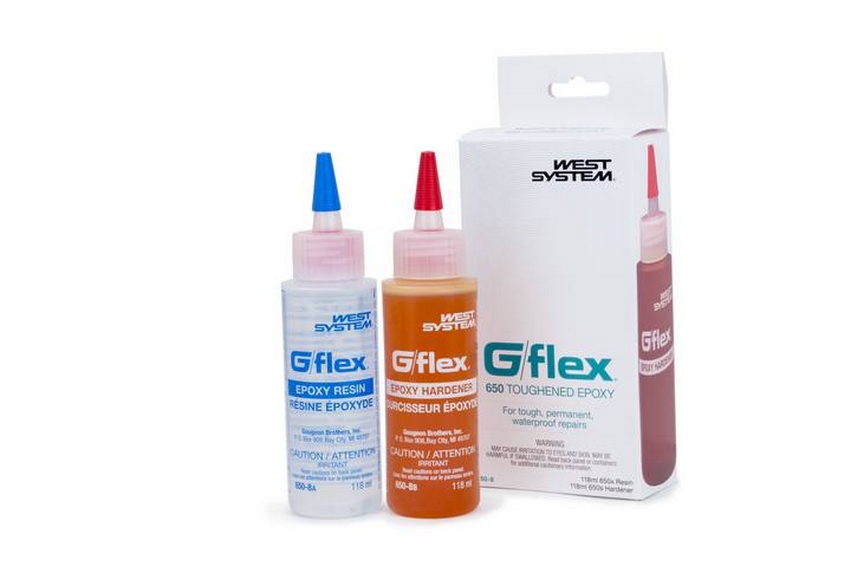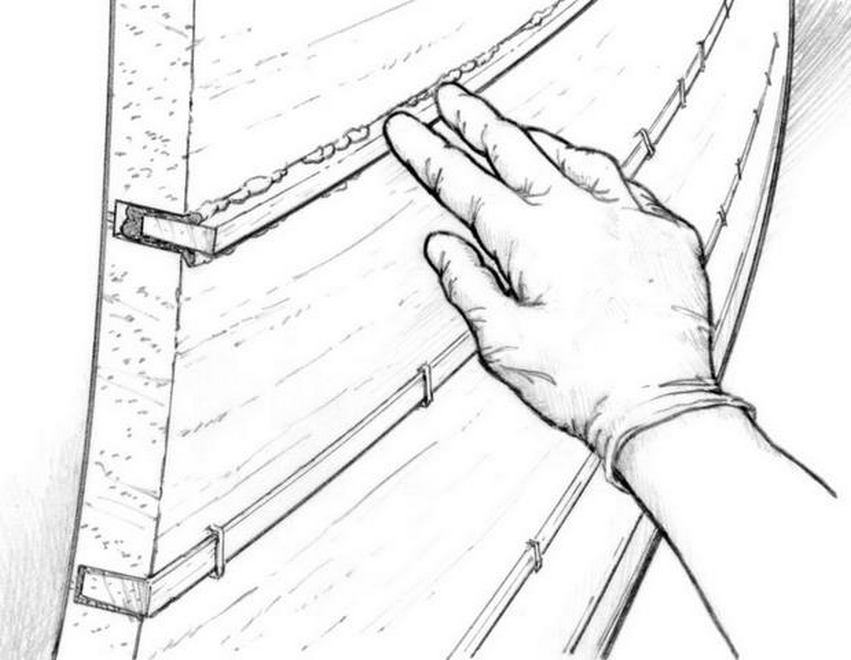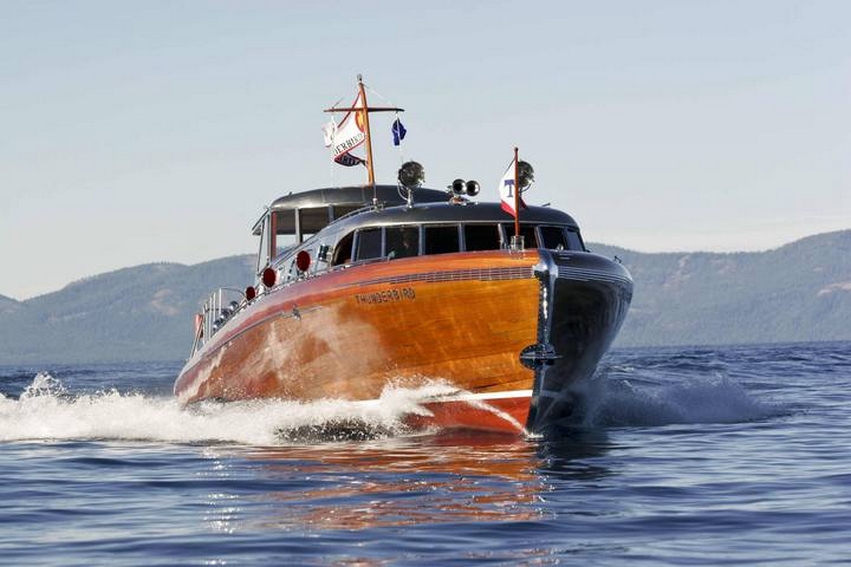
By Tom Pawlak — GBI Technical Advisor
In the spring of 2016, several US Coast Guard vessel inspection officers from the east coast attended our 2-day Professional Fiberglass Boat Repair Workshop. Afterward, they asked if we would consider creating a document that they could hand out to commercial boat owners, captains and vessel reps that would provide guidelines for proper use of WEST SYSTEM products for repairing and maintaining larger wooden vessels subject to Coast Guard inspections. They were having an increasingly difficult time because a number of commercial boat operators were repairing their own vessels using techniques that caused concern. The reasons given for using these questionable procedures vary from trying to save some money to the short supply of qualified wooden vessel shipwrights who could complete work in a reasonable amount of time. To make their case that their repairs were appropriate, some operators handed the Coast Guard Inspection Officers the WEST SYSTEM Wooden Boat Restoration & Repair manual. Unfortunately, some were cherry picking information and techniques intended for repairing smaller recreational wooden craft, and not following all of the recommended procedures for avoiding problems.
The Coast Guard showed us pictures of some of the questionable repairs and asked for our thoughts and guidance. They were trying to work with the vessel owners to keep costs in check, but not at the expense of human safety.
The Navigation and Vessel Inspection Circular (NAVIC) document, which the Coast Guard is obligated to enforce, allows for temporary repairs that can eventually be approved as permanent if the repair remains viable and strong after multiple scheduled inspections. We agreed to collaborate with the Coast Guard to develop guidelines for using WEST SYSTEM Epoxy products for permanent repairs on wooden vessels larger than 40′.
We consider it a work in progress.
West System, Inc. Best Practices for Application on USCG Inspected Wooden Vessels
Introduction
WEST SYSTEM Epoxy is a versatile, two-part, marine-grade epoxy that bonds and coats fiberglass, wood, metal, fabrics and other composite materials to provide superior strength and moisture resistance. WEST SYSTEM also provides extensive instructional materials that include the Wooden Boat Restoration and Repair Manual, which is often used by commercial vessel operators.
The WEST SYSTEM Wooden Boat Restoration and Repair Manual is intended to offer repair methodology for wooden vessels designed for recreation and racing. These vessels have thinner planking and lighter framing than vessels designed for commercial use. The heavier construction of commercial vessels and the long duration between haul outs results in structures that have higher moisture content and more movement due to moisture content changes. In addition, shipwrights who are skilled in recreational vessel repair may not fully understand the loads and stresses on a heavier built commercial vessel.
Achieving Maximum Adhesion Strength
The moisture content of wood needs to be within 8%–12% for best adhesion when using WEST SYSTEM Epoxy 105 Resin/20x Hardener. If the moisture content is between 12%–18% use WEST SYSTEM G/flex® Epoxy.

G/flex Epoxy is a two-part toughened system that is more flexible than 105 Resin-based epoxy. G/flex is available in two formulations, 655 Thickened Epoxy Adhesive and 650 Toughened Epoxy (which is a liquid version). It is recommended as an adhesive when working with a traditionally constructed wooden vessel below the waterline. G/flex Epoxy is also well-suited for repairing planking or interior structure that is greater than ½ inch in thickness. G/flex Epoxy is a tough/high elongation epoxy adhesive and should be considered for all bonding/gluing applications.
To get the best adhesion, wood should be sanded with 60–100 grit aluminum oxide sandpaper; hardwoods benefit from course sandpaper (40–60 grit). Avoid using tack rags and anti-clog sandpaper as they can contaminate the surface and interfere with adhesion.
Oily woods and white oak benefit from 70%–91% isopropyl alcohol wipe, using a wipe on/wipe off approach with paper towels.
When using WEST SYSTEM 105 Resin-based epoxy as an adhesive for bonding, it is advised to pre-coat all bonding surfaces with neat (un-thickened resin and hardener mixture) epoxy prior to applying epoxy thickened with high-density filler to bridge gaps.
Thinning WEST SYSTEM Epoxy with solvent is not recommended because this significantly reduces strength and moisture exclusion effectiveness. (See “Penetrating Epoxy—Legend or Myth” on page 11 of this issue).
All WEST SYSTEM Epoxies are compatible wet on wet. After it cures, clean with water and an abrasive pad, then sand the epoxy dull to get good adhesion.
Considerations when Applying Sheathing
Sheathing should be considered only if planks are dried and edge-glued together.
For wooden vessels over 40 feet, we strongly recommend consulting a naval architect when sheathing the hull.
WEST SYSTEM Epoxy is not recommended as a coating on a traditionally built wooden vessel in a bilge area that is designed to swell. The danger is trapping moisture in the planking, stringers, floors, and frames leading to potential rot/decay. Only vessels that are edge-glued together, sealed on the outside with epoxy and planks epoxied to frames (cold molded construction) can be coated on the interior. All other traditionally built vessel interiors should not be sealed with epoxy.
When fiberglass sheathing is used on a wooden hull with edge-glued and sealed planks, a +-45° fiber orientation will better accommodate potential wood movement. The fiberglass provides chafe protection and hull reinforcement.
When multiple layers of fiberglass fabric are required, it is good practice to stagger the seams and edges from layer to layer by at least 1 inch.
Seam Concerns
Significant gaps in planking, stems or transoms may indicate poor connections to hull framing that may require refastening. The techniques listed in this document do not address these concerns.
WEST SYSTEM Epoxy should not be considered a seam compound (i.e. rope caulk and oakum, or 3M 5200 marine sealant). Epoxy can be used to reduce the overall gap between planks by making a spline (a long and narrow piece of wood) of the same wood species then gluing the spline to the edge of the plank with G/flex 655, effectively widening the plank and reducing the gap. A conventional gap should be left alongside the plank to facilitate/accommodate rope caulk and seam compound.
If a temporary fiberglass wrap is desired to strengthen or reinforce plank ends at the stem or transom, the plank ends and edges should be reefed and filled ahead of time with G/flex 655 Epoxy or, if the gap is greater than ½ inch, with wood splines glued in with G/flex 655.

Fiberglass sheathing can be applied over splined planks that are sealed with epoxy. Fiberglass fabric is ideally positioned at +-45° fiber orientation to decrease stiffness and allow more movement. The fiberglass may provide adequate reinforcement for temporary and possibly long-term repair as long as fiberglass buildup is thick enough, extends back onto the planks at least 10–12 inches from plank ends and extends onto and wraps around the stem timber. Each fiberglass layer should be an inch or two back from the previous layer to create a gentle transition.
G/flex 650 can be used to wet-out light fiberglass fabrics (12 oz. / sq.ft. or less per layer) to decrease stiffness and allow more movement.
WEST SYSTEM 105 Resin/20x Hardener can be applied over partially cured G/flex Epoxy as long as the epoxy is still tacky (like masking tape) to create a chemical bond between the two epoxies. This approach might be used to wet-out heavy fiberglass cloth with a low-viscosity epoxy (for faster wet-out of the fabric) after G/flex is initially applied to the wood for its superior toughness and flexibility.
If WEST SYSTEM 105 Resin/20x Hardener have been used previously and have cracked at or near an epoxy joint, repair with G/flex Epoxy.
If heavier fabrics (more than 12 oz./sq.ft.) are used, the 105 Resin-based epoxy is required to wet them out properly.
Additional Guidelines for Scarfs
See the WEST SYSTEM Wooden Boat Restoration and Repair Manual for an overview on scarfing.
WEST SYSTEM recommends a minimum 12:1 bevel ratio for most wood repairs below the waterline, along with using a screw and G/flex Epoxy glue approach.
When fitting graving pieces or a Dutchman the glue line should not exceed a ½ inch thickness of epoxy to bridge the gaps.
Fairing Compound Application
Epoxy based fairing compound can be used over stable pieces of wood that have been epoxy coated. The epoxy coating acts as a sealer/primer allowing the fairing compound to adhere well.
Using epoxy fairing compounds on traditionally constructed wooden vessels will prevent the wood from absorbing moisture and swelling to tighten the seam.
Rotted Wood
Maximum of a ½ inch thickness of epoxy should be used to consolidate rotted wood.
For applications greater than ½ inch use a Dutchman. See the previous section “Additional Guidelines for Scarfs.”
Excavate the rotted area. Dry the wood and use a wire brush parallel to the grain to remove remaining punky wood prior to applying liquid resin and hardener mixture.





